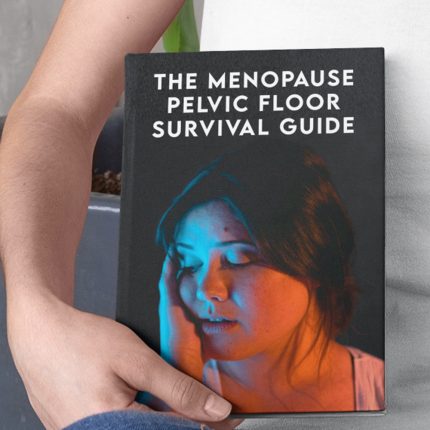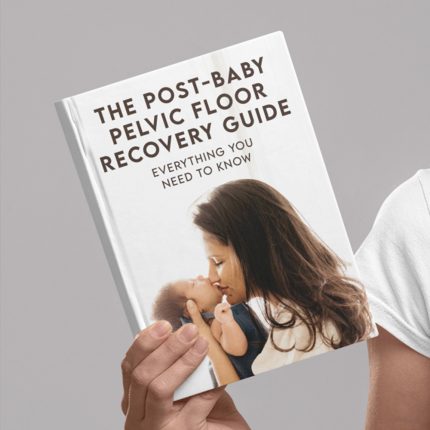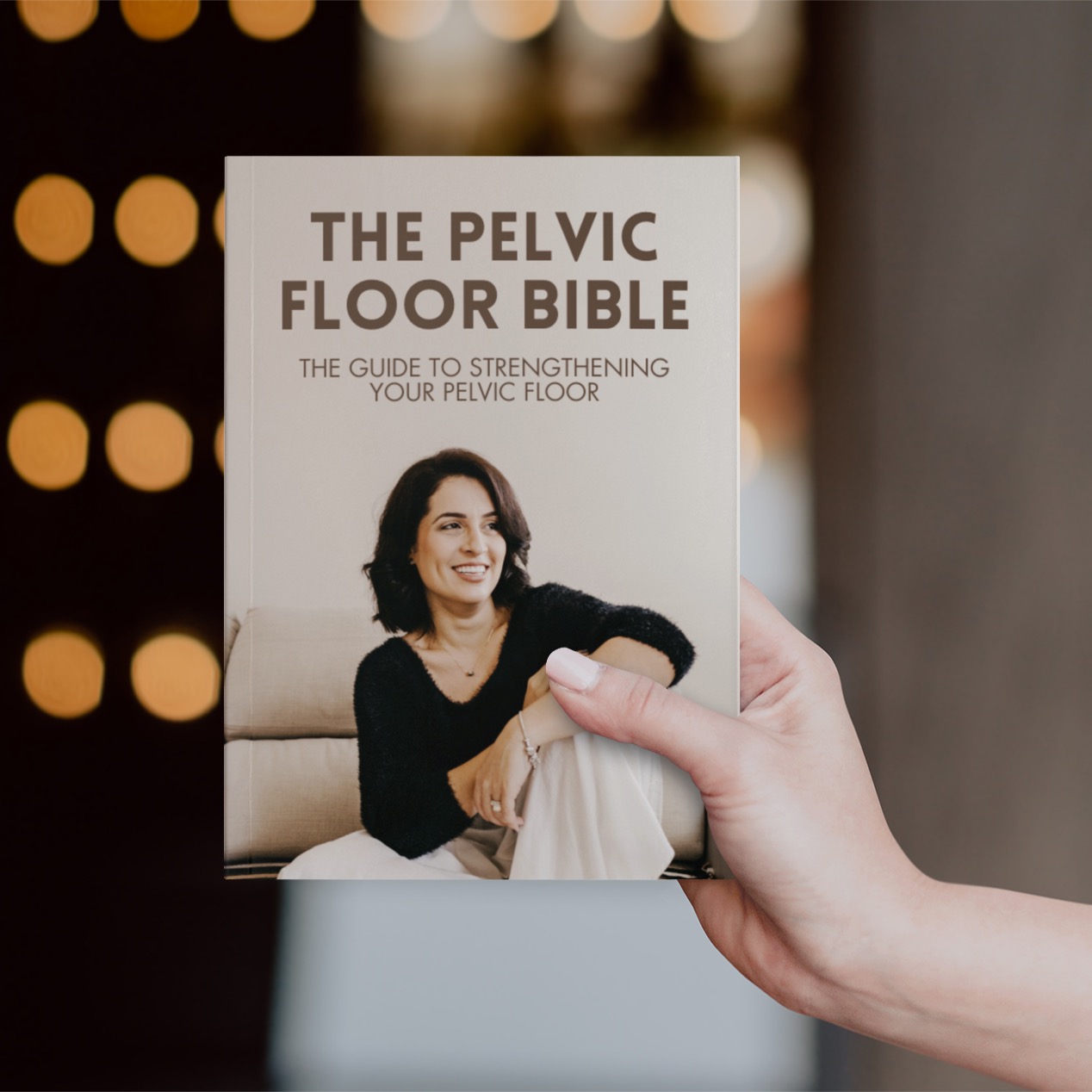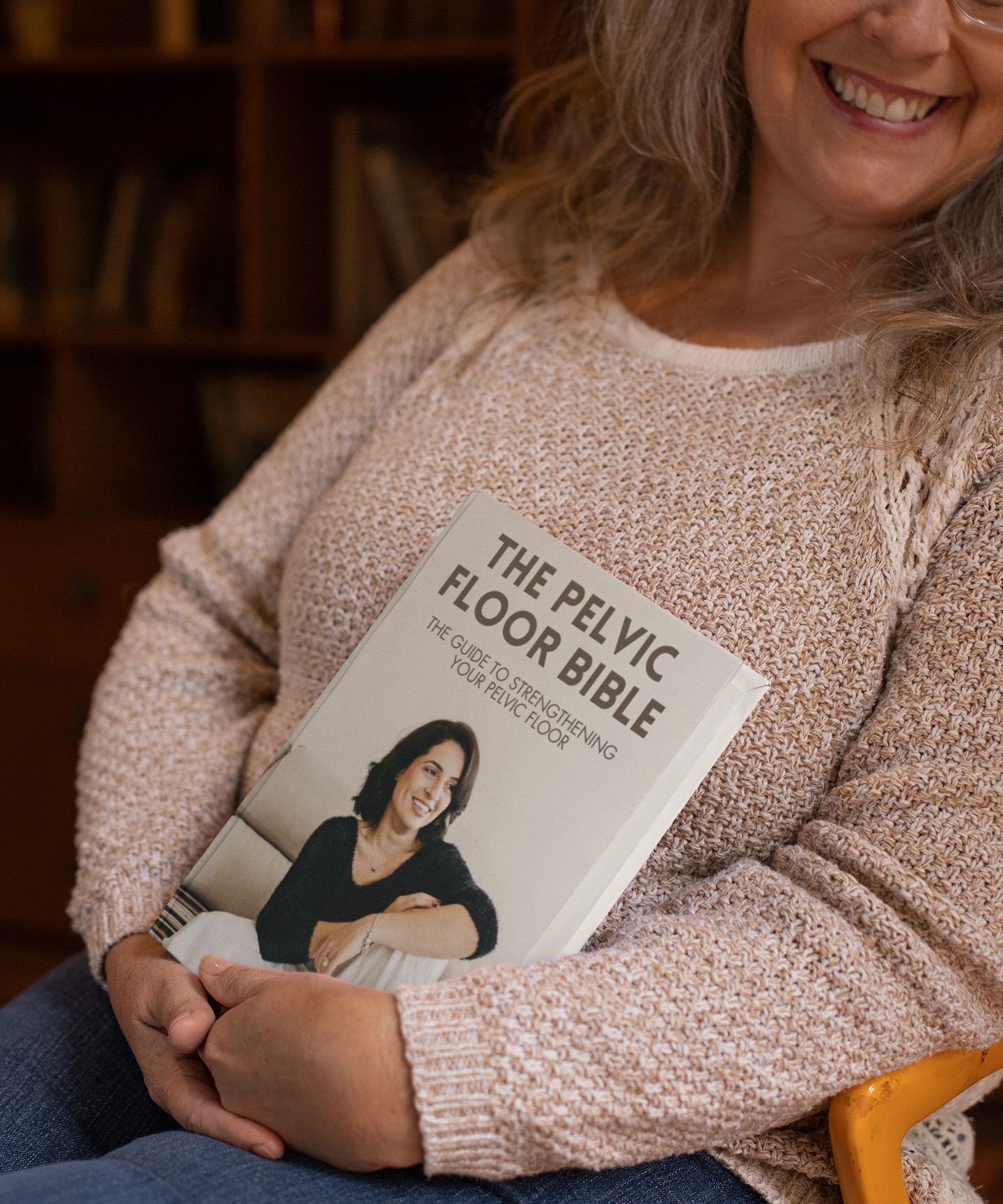Ever had that nagging discomfort after a pelvic floor therapy session that makes you wonder if your body is staging a full-on protest? You’re not alone. Many Gen-Zers and millennials experiencing pelvic floor therapy also grapple with the unexpected aftermath: pain, awkward muscle twitches, or even that “off day” feeling that makes you question if you accidentally did the wrong workout. This deep dive into pain after pelvic floor therapy isn’t here to scare you—it’s here to explain why it happens, how to recognize the difference between normal healing and something more concerning, and most importantly, how to manage and overcome these challenges with some holistic, science-backed solutions.
Quick Links to Useful Sections
- Understanding Pain After Pelvic Floor Therapy
- Why Does Pain Occur After Pelvic Floor Therapy?
- Normal Soreness Versus Concerning Pain
- Normal Soreness:
- Concerning Pain:
- Managing and Mitigating Pain Post-Therapy
- 1. Give Your Muscles a Break
- 2. Gentle Stretching and Warm-Ups
- 3. Use Heat and Cold Therapy
- 4. Stay Hydrated and Nutrition-Focused
- 5. Mind-Body Techniques
- Physical Adjustments and Self-Care Techniques
- Integrative and Holistic Approaches for Pain Relief
- Lifestyle and Nutrition: Supporting Your Healing Journey
- Anti-Inflammatory Diet
- Hydration is Key
- Smooth Sleep and Stress Management
- Case Studies: Real-Life Transformations From Pain to Progress
- Case Study 1: Rediscovering Ease After Persistent Soreness
- Case Study 2: Overcoming the Post-Surgery Hurdle
- Case Study 3: Breaking the Cycle With Mindfulness
- Creating Your Recovery Plan: Practical Steps for Lasting Relief
- Step 1: Comprehensive Evaluation
- Step 2: Set Realistic and Attainable Goals
- Step 3: Integrate Multiple Modalities
- Step 4: Establish and Honor a Routine
- Step 5: Monitor, Document, and Adjust
- Resources and Community Support: Your Next Steps
- Pain After Pelvic Floor Therapy FAQs
- Your Journey Towards a Pain-Free Pelvic Floor
Understanding Pain After Pelvic Floor Therapy
Pelvic floor therapy is a powerful tool for enhancing core stability, improving incontinence, and recovering from pelvic trauma or surgery. But sometimes, after those revitalizing sessions, you might experience discomfort or pain in the pelvic or lower abdominal area. It might feel like your muscles are a bit too "woke" from all the work—or even like they've been through a mini boot camp!
In essence, pain after pelvic floor therapy can result from several factors including overexertion, muscle imbalances, inflammation, and even nerve sensitization. While a certain level of soreness is common following any kind of physical therapy (think of it as the burn after an intense workout), persistent or sharp pain that lasts longer than a few days may indicate that your body is trying to tell you something important.
It’s essential to understand that pain is not always an enemy. In many cases, it can be a signal that your body is adapting to new movement patterns and strengthening structures that have been neglected for a while. However, deciphering this message correctly is the secret sauce to a speedy recovery.
Why Does Pain Occur After Pelvic Floor Therapy?
When you engage in pelvic floor therapy, you’re essentially signaling those delicate muscles and connective tissues to wake up and work harder. Much like when you exercise after months of brunching on avocado toast, your body may not immediately be ready for the sudden surge of activity. Here are some reasons why pain might crop up:
- Muscle Overload: Your pelvic floor muscles—or the ones you never even knew existed—might be working overtime. Overexertion can lead to tiny microtears, which in turn cause inflammation and pain. This is a normal part of the strengthening process, but it should subside with proper rest and care.
- Improper Technique: Even with a guided session, it’s possible that you’re not quite hitting the right spot. Misfiring your exercises (not engaging the right muscles) can lead to undue strain on surrounding tissues.
- Tissue Inflammation: Just like any muscle, the tissues in your pelvic floor might get a bit inflamed after being worked. This inflammatory response is part of the natural healing process but can also lead to temporary pain.
- Nerve Sensitivity: Pelvic floor therapy might also stimulate nerve endings that have been dormant or underactive. This can cause sensations ranging from mild discomfort to sharp pain, particularly in those who are more sensitive.
- Scar Tissue: In some cases, previous surgeries or injuries could have left scar tissue in the pelvic region. These areas may react differently during therapy sessions by causing increased discomfort.
Recognizing the root of your pain is key. While these reasons are all valid, they also underline the importance of a personalized approach to pelvic floor therapy. The more you know about your body’s signals, the better you'll be at determining whether that pain is a sign of progress, a caution to ease up, or a prompt to seek professional advice.
Normal Soreness Versus Concerning Pain
Let’s be clear: a little soreness is par for the course after any new exercise routine, including pelvic floor therapy. But there’s a fine line between normal post-therapy discomfort and pain that warrants a closer look. Here’s how to tell the difference:
Normal Soreness:
- Mild to Moderate Discomfort: This type of pain is usually described as a dull ache or tightness that fades within 48 to 72 hours.
- Localized to the Treated Area: The pain should be confined to the pelvic region or the specific muscles targeted during therapy.
- Improved With Rest: Gentle stretching, warm compresses, and rest often alleviate the discomfort.
- No Sharp or Stabbing Sensations: Normal soreness shouldn’t include any excruciating, sharp, or jabbing pain.
Concerning Pain:
- Pain Lasting More Than a Few Days: Discomfort that doesn’t improve or worsens over time might be a red flag.
- Sharp, Stabbing, or Burning Sensations: These can indicate nerve involvement or tissue damage that might need professional attention.
- Spread of Pain: If the pain radiates beyond the immediate pelvic area or affects other parts of your lower back or abdomen, it may be cause for concern.
- Associated Symptoms: Additional signs like fever, unusual discharge, or difficulty urinating suggest that something more serious could be at play.
Always err on the side of caution. If you’re ever unsure about the type or severity of your pain, it’s wise to consult with your pelvic floor specialist or a healthcare provider. Your body’s signals are vital clues in crafting a recovery plan that works for you.
EXPLORE OUR EXPERT WOMENS'S PELVIC FLOOR GUIDES WITH HIDDEN TIPS AND TRICKS
👩💻 Educational Book Store (Instant Download) 👩💻
Managing and Mitigating Pain Post-Therapy
Once you’re aware of what’s normal and what isn’t, the next step is taking proactive measures to manage and, ultimately, mitigate pain after your pelvic floor therapy sessions. Here are several strategies that can help you reclaim your comfort and continue on your journey to pelvic wellness:
1. Give Your Muscles a Break
Just as you wouldn’t marathon through a gym session every day, your pelvic floor muscles need time to recover. Schedule rest days and alternate intensive therapy sessions with lighter, more restorative exercises. Remember: healing is a marathon, not a sprint.
2. Gentle Stretching and Warm-Ups
Incorporating gentle stretching before and after your sessions can make a world of difference. Think of it as giving your muscles a warm embrace to ease them into the workout and then soothing them afterward.
3. Use Heat and Cold Therapy
Warm compresses or heating pads can help loosen tight muscles and reduce stiffness. On the flip side, applying ice packs can help decrease inflammation if you feel particularly sore after a session.
4. Stay Hydrated and Nutrition-Focused
Drinking plenty of water and infusing your diet with anti-inflammatory foods like leafy greens, berries, and omega-3 rich fish can support muscle recovery. Lean proteins also play a crucial role in rebuilding those hardworking pelvic muscles.
5. Mind-Body Techniques
Stress and anxiety can amplify pain sensations, so practices like deep breathing, mindfulness meditation, or even light yoga can help calm your nervous system and support physical recovery.
While these strategies can help soothe normal post-therapy soreness, be sure to tune in to your body. If the pain remains stubborn or escalates, it might be time to tweak your routine or consult a professional.
Physical Adjustments and Self-Care Techniques
Sometimes the secret to managing pain after pelvic floor therapy lies in tweaking not just your workout schedule, but also the way you move in your everyday life.
Posture and Alignment: Maintaining good posture can alleviate undue strain on your pelvic region. Whether you’re sitting at your desk or chilling on the couch, an aligned posture helps redistribute the load across your spine and pelvic floor muscles.
Ergonomic Adjustments: Consider investing in ergonomic furniture or cushions that provide lower back and pelvic support. These small adjustments can translate into big improvements in comfort and pain reduction.
Mindful Movement: Practice mindful movement by paying close attention to the mechanics of your daily activities. Whether you’re bending to pick up your favorite snacks or getting out of bed in the morning, easing into each movement can prevent unnecessary stress on your healing muscles.
Self-Massage Techniques: Incorporating self-massage into your routine—using tools like foam rollers or even your hands—can help reduce muscle tension, enhance blood flow, and invite relaxation into your rehabilitation process.
Integrative and Holistic Approaches for Pain Relief
For many young adults, a holistic approach that marries conventional and alternative therapies offers a fun yet effective path to relief. If you’re tired of thinking of pain solely as a negative after-effect, it might help to explore some integrative strategies designed to harmonize your body’s natural healing processes.
Acupuncture and Acupressure: Ever notice how a few needles or a well-placed pressure point can work wonders on your tension? Acupuncture sessions target specific energy channels in your body, potentially reducing inflammation and easing pain. Complementary acupressure techniques you can try at home also help stimulate circulation and alleviate muscle tightness.
Herbal Remedies and Supplements: Certain herbs such as turmeric and ginger are renowned for their anti-inflammatory effects. Additionally, supplements like omega-3 fatty acids and magnesium could serve as your secret weapons in reducing muscular pain and promoting a smooth recovery. Always check in with a healthcare provider before adding anything new to your regimen!
Yoga, Pilates, and the Art of Mindful Movement: These practices emphasize not only strength but also balance and flexibility. Incorporating a few restorative yoga poses or Pilates-based core exercises into your recovery plan can enhance blood flow, improve muscle coordination, and reduce unnecessary strain on your pelvic floor. Think of it as giving your muscles a well-deserved stretch and an opportunity to breathe.
Chiropractic Care and Massage Therapy: Regular chiropractic adjustments or targeted massage therapy can work wonders for realigning your body and breaking down adhesions that may contribute to discomfort. These therapies complement your pelvic floor routines by ensuring that every muscle and joint is in sync.
By blending these integrative approaches with your standard therapy sessions, you create a more balanced, far-reaching recovery plan that supports both your physical and mental well-being.
Lifestyle and Nutrition: Supporting Your Healing Journey
The way you live and eat can have a tremendous impact on how quickly your body recovers from therapy-induced pain. A lifestyle that supports healing is about more than just the right exercises—it’s about creating an environment where your body can thrive.
Anti-Inflammatory Diet
Nutrition plays a pivotal role in reducing inflammation. Embrace a diet rich in colorful fruits, vibrant vegetables, whole grains, and lean proteins. Foods like blueberries, spinach, salmon, and walnuts aren’t just Instagram-worthy; they’re also packed with antioxidants and nutrients that support tissue repair.
Hydration is Key
Keeping hydrated is non-negotiable when it comes to muscle recovery. Water helps maintain muscle elasticity and facilitates the removal of waste products produced during physical exertion. Complement your water intake with hydrating foods like cucumbers and watermelon for that extra boost.
Smooth Sleep and Stress Management
Quality sleep is the unsung hero in any recovery plan. Aim for 7-9 hours of quality sleep per night to help your body repair and reset. Stress, on the other hand, can aggravate pain. Engage in stress management techniques—be it through meditation, reading your favorite book, or even binge-watching that hilarious sitcom—to allow your body to relax and heal.
Incorporating these lifestyle and nutritional strategies into your everyday routine not only supports your recovery process but also fortifies your overall pelvic floor health.
Case Studies: Real-Life Transformations From Pain to Progress
Sometimes, nothing beats real-life stories of overcoming pain and reclaiming confidence. Let’s dive into a few case studies that illustrate different approaches to managing pain after pelvic floor therapy.
Case Study 1: Rediscovering Ease After Persistent Soreness
Jasmine, a 28-year-old who had been grappling with chronic pelvic discomfort following a bout of intensive therapy, decided to experiment with integrative approaches. Initially, the post-session soreness had her doubting the therapy. However, by incorporating gentle yoga, adjusting her workout intensity, and using targeted herbal supplements, Jasmine was able to cut down her pain dramatically. Over time, she reported less pain and more flexibility in her pelvic region. Her blended approach of conventional therapy and alternative modalities played a starring role in her recovery journey.
Case Study 2: Overcoming the Post-Surgery Hurdle
Michael, a 45-year-old recovering from pelvic surgery, faced an uphill battle as he experienced intense pain after initiating his pelvic floor therapy. Through a carefully monitored regimen that included biofeedback, low-impact pelvic exercises, and lifestyle modifications like an anti-inflammatory diet, Michael began to see steady improvements. What once felt like a formidable post-surgery obstacle gradually turned into a manageable part of his healing process. His willingness to adjust his approach, combined with a proactive attitude, proved that pain can be tamed with the right balance of therapy and self-care.
Case Study 3: Breaking the Cycle With Mindfulness
For Serena, a 32-year-old marketing executive, the combination of professional pelvic floor therapy and heightened stress levels resulted in persistent discomfort. Realizing that stress was a major trigger, Serena incorporated mindfulness meditation and deep breathing exercises into her daily routine. Alongside these practices, she modified her pelvic exercises according to her body’s feedback. Her journey shows that by addressing both the physical and mental components of pain, even the most stubborn discomfort can loosen its grip.
These stories serve as glowing examples that a tailored, patient-centered approach to pelvic floor therapy—one that listens to your body—can create sustainable improvements in managing pain.
Creating Your Recovery Plan: Practical Steps for Lasting Relief
When it comes to managing pain after pelvic floor therapy, a one-size-fits-all approach just won’t cut it. Creating your personalized recovery plan is key to ensuring that every session brings you closer to a pain-free life. Here’s a step-by-step guide to help you craft a plan that resonates with your unique needs:
Step 1: Comprehensive Evaluation
Work closely with a pelvic floor specialist or a physical therapist to understand your baseline. This evaluation should cover your physical state—muscle strength, flexibility, and any areas of discomfort—as well as lifestyle factors such as your daily routine, stress levels, and nutritional habits.
Step 2: Set Realistic and Attainable Goals
Define what you want to achieve: Is it reducing pain, regaining full function after an injury, or simply feeling more comfortable during daily activities? Clear, realistic objectives help keep you motivated and provide a benchmark for progress.
Step 3: Integrate Multiple Modalities
Don’t shy away from combining various strategies. A holistic recovery plan might include:
- Personalized pelvic floor exercises tailored to your current strength and flexibility.
- Use of biofeedback and electrical stimulation techniques for precise muscle engagement.
- Complementary therapies such as acupuncture, massage, or chiropractic adjustments.
- Mindfulness practices, including meditation, deep breathing routines, and gentle yoga.
- Lifestyle modifications, including anti-inflammatory nutrition, improved sleep hygiene, and ergonomic adjustments.
Step 4: Establish and Honor a Routine
Consistency is essential. Create a daily or weekly schedule that integrates your exercises, relaxation techniques, and nutritional plans. Use digital apps or reminders to help you stick to your plan—and always listen to your body’s signals.
Step 5: Monitor, Document, and Adjust
Keep a journal or log of your activities, the pain levels you experience, and any factors that seem to affect your recovery. Regularly evaluating your progress with your healthcare provider allows you to tweak your regimen—whether that means reducing exercise intensity on a flare-up day or introducing new therapies for added relief.
A personalized and dynamic recovery plan is your roadmap to long-term pelvic floor health. By embracing a flexible strategy that evolves with your progress, you pave the way for a smoother, more effective journey free of persistent post-therapy pain.
Resources and Community Support: Your Next Steps
Healing isn’t a solo journey. Whether you need extra tips to manage pain, recommendations on lifestyle adjustments, or simply a community that shares your experiences, there’s a wealth of support waiting for you.
Online Forums and Communities: Platforms like Reddit, dedicated Facebook groups, and specialized pelvic health forums offer spaces to share stories, ask questions, and gain peer support. Learning from others who’ve walked the same path can provide valuable perspectives and reassurance.
Educational Blogs and Podcasts: Tune into blogs and podcasts hosted by pelvic health experts. They often break down complex topics into engaging, easily digestible content that fits perfectly into a busy lifestyle.
Professional Organizations: Organizations like the American Physical Therapy Association (APTA) or the International Pelvic Pain Society offer resources, research updates, and directories to locate certified specialists in your area.
Local Workshops and Support Groups: Don’t underestimate the power of connecting offline. Workshops, support groups, and even local classes in yoga or meditation can provide both physical and emotional benefits as you build a network of understanding peers.
Remember, you’re not in this alone. With the right support and resources, managing pain after pelvic floor therapy can transform from a confusing challenge into a stepping stone towards greater health and confidence.
Pain After Pelvic Floor Therapy FAQs
Below are some frequently asked questions about experiencing pain after pelvic floor therapy, along with clear, straightforward answers to guide your recovery journey.
1. Is it normal to experience pain after pelvic floor therapy sessions?
Yes. Some degree of soreness and mild discomfort is normal as your muscles adapt and rebuild their strength. However, if the pain is sharp, persists for more than a few days, or is accompanied by other symptoms, it’s a good idea to consult your therapist or healthcare provider.
2. How can I tell if my pain is a normal reaction or something more serious?
Normal soreness is usually dull, localized, and diminishes within 48 to 72 hours. If you experience sharp, burning, or radiating pain, or if new symptoms appear such as fever or unusual discharge, it’s important to seek professional advice immediately.
3. What self-care strategies can help reduce post-therapy pain?
Techniques such as controlled stretching, heat or cold therapy, ensuring proper hydration, and using relaxation methods like deep breathing can all help. Integrating lifestyle changes and modifying your exercise routine based on your body’s feedback are also key strategies.
4. Should I stop my pelvic floor exercises if I experience pain?
Not necessarily. It might be best to modify your routine or decrease intensity temporarily rather than stopping altogether. However, if the pain worsens, it’s essential to discuss your symptoms with your healthcare provider to adjust your exercises safely.
5. How long should I expect mild soreness to last?
Typically, mild soreness lasts between one to three days after a session. Persisting pain beyond this timeframe might warrant a reevaluation of your exercise program or technique.
6. Can complementary therapies really help ease pain after therapy?
Absolutely. Practices like acupuncture, massage therapy, and mindfulness meditation have been shown to reduce inflammation and promote overall muscle relaxation, which can help mitigate post-therapy pain.
7. Are there any nutritional tips to speed up recovery?
Yes. A balanced diet rich in anti-inflammatory foods, antioxidants, and lean proteins supports muscle repair and can help reduce discomfort between sessions.
8. When should I contact my healthcare provider about my pain?
If you experience sharp, radiating pain, additional symptoms such as fever or unusual discharges, or if your pain persists or worsens despite home care, it’s important to contact your healthcare provider immediately.
Your Journey Towards a Pain-Free Pelvic Floor
Embracing the road to recovery after pelvic floor therapy is as much about understanding your body as it is about strengthening it. The discomfort you experience, while challenging, is often a sign of progress—a sign that your body is working hard to repair, strengthen, and restore balance.
Every technique you try, every adjustment you make to your daily routine, and every moment you spend nurturing your mind and body contributes to a brighter, more confident future. Whether you’re tweaking your exercises, relying on holistic healing practices, or simply learning to listen to your body’s subtle cues, the journey is uniquely yours—and every step is a victory.
Embrace the process, celebrate the small triumphs, and remember that healing is rarely linear. With the right blend of therapy, self-care, lifestyle adjustments, and community support, a pain-free, empowered pelvic floor isn’t just a distant goal—it’s an achievable reality.
Step boldly into each new day, armed with knowledge, support, and the confidence that every bit of progress, no matter how small, is a victory on your path to holistic pelvic health.
Curious About Your Pelvic Floor? Explore our curated collection of insightful articles to learn more and take charge of your health.
- Pelvic Floor Basics
- Pelvic Floor Exercises & Workouts
- Pelvic Floor Kegel Exercises: Techniques & Benefits
- Advanced Pelvic Floor Workouts
- Pre/Post-Natal Pelvic Floor Routines
- Pelvic Floor Exercises for Men
- Pelvic Floor Therapy Techniques
- At-home vs Professional Pelvic Floor Therapy Options
- Diet & Lifestyle for a Healthy Pelvic Floor
- Pelvic Floor Health & Wellness
- Specialized Pelvic Floor Conditions & Treatments
Now back to the main article!






















